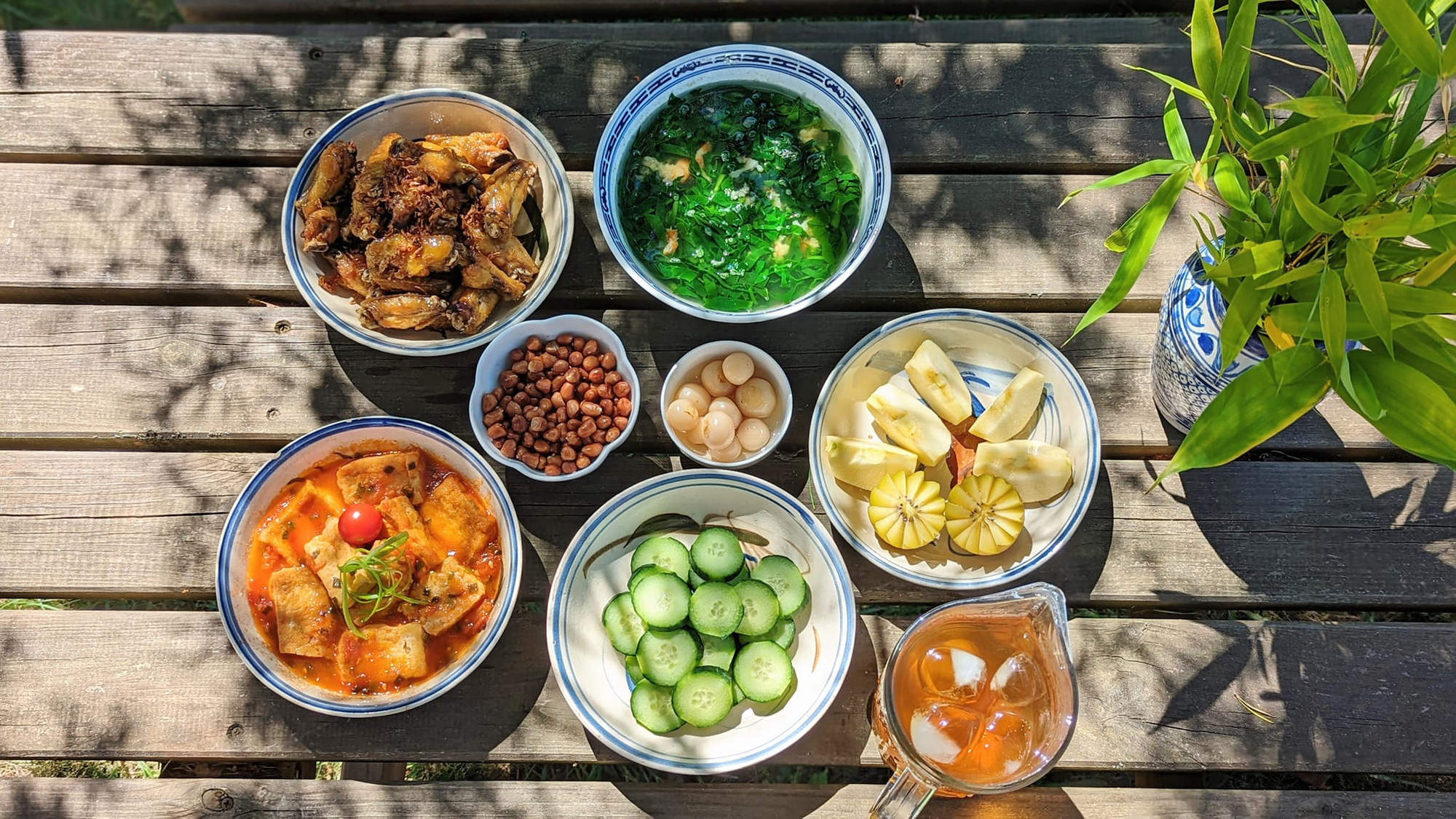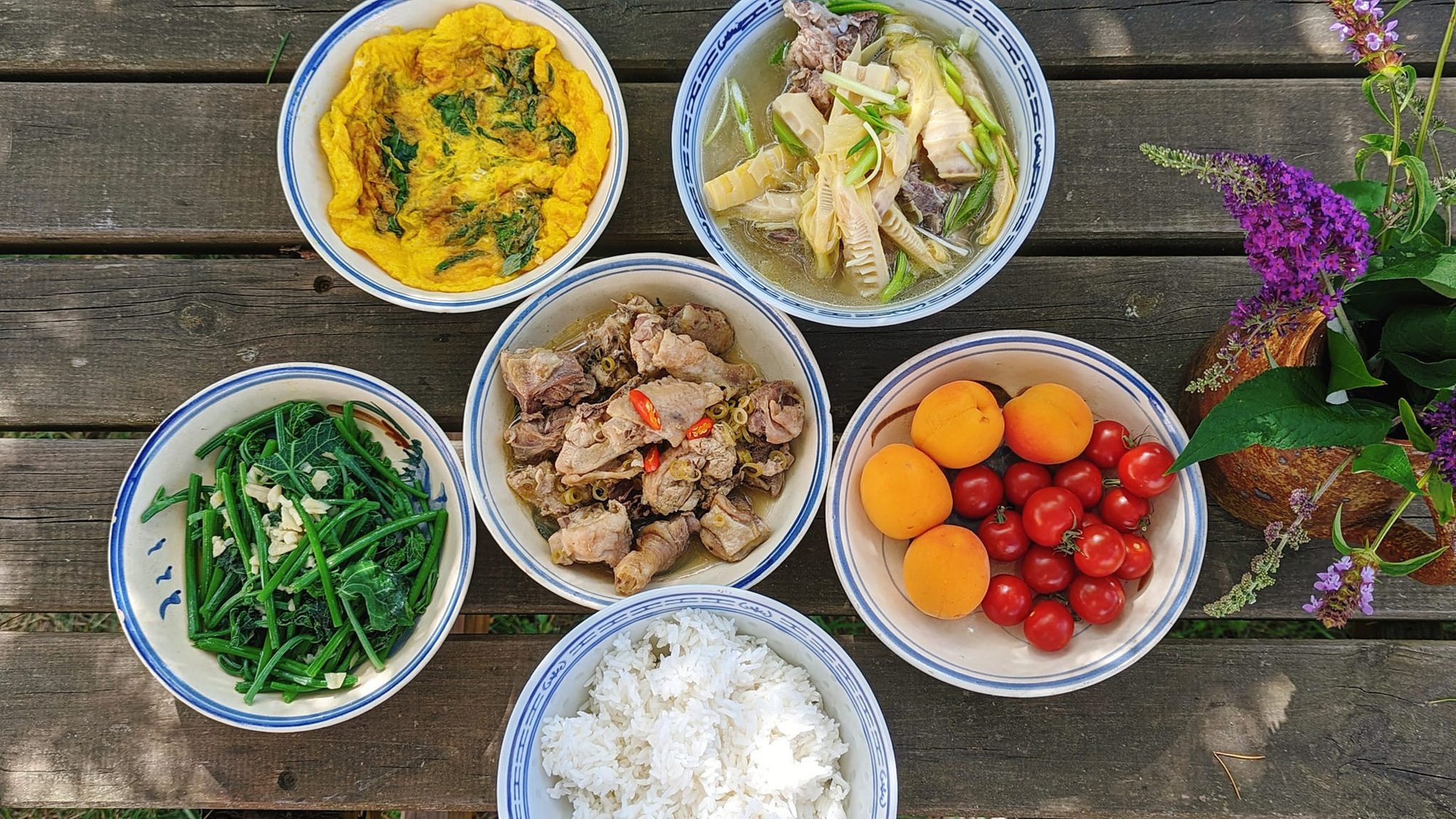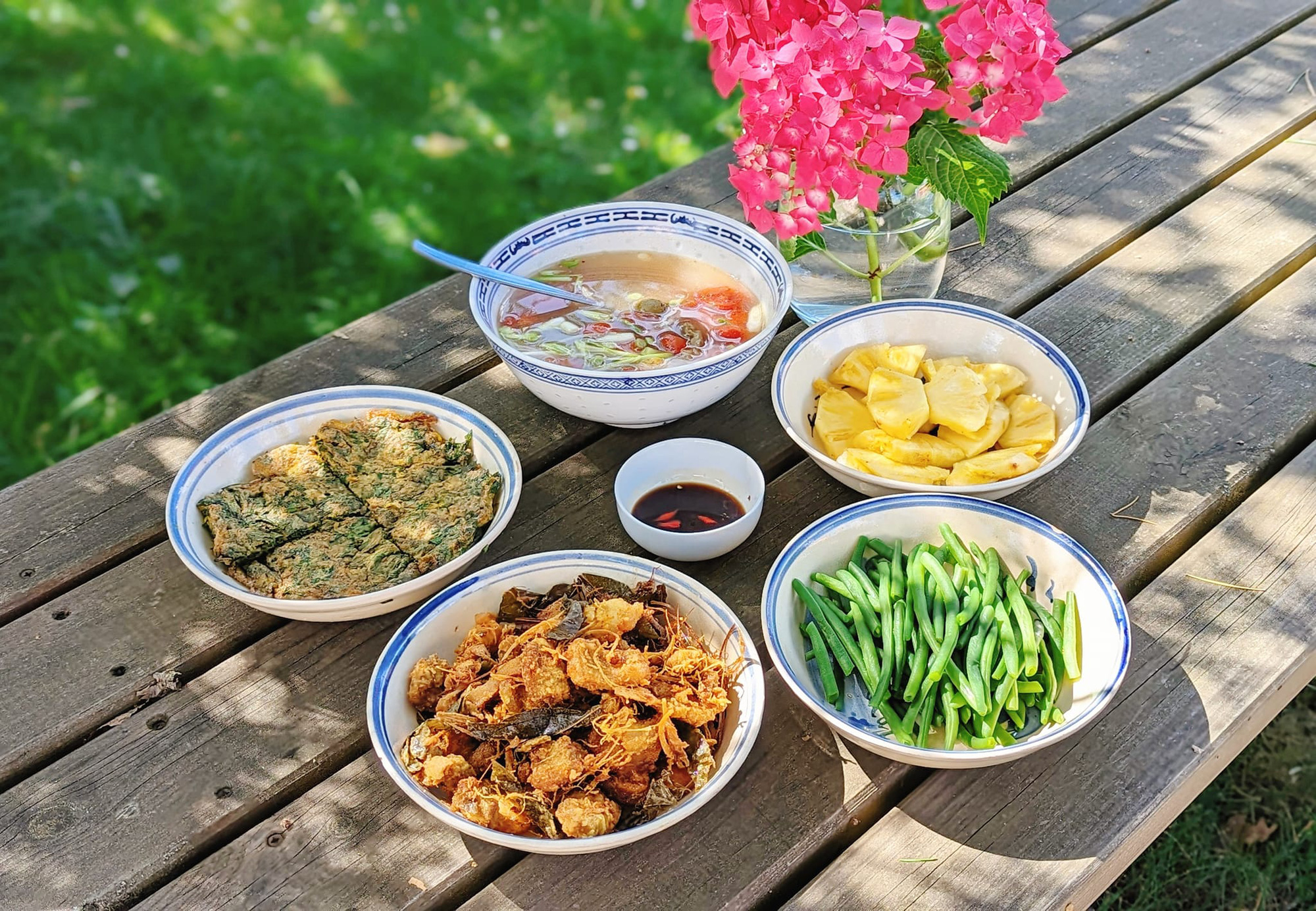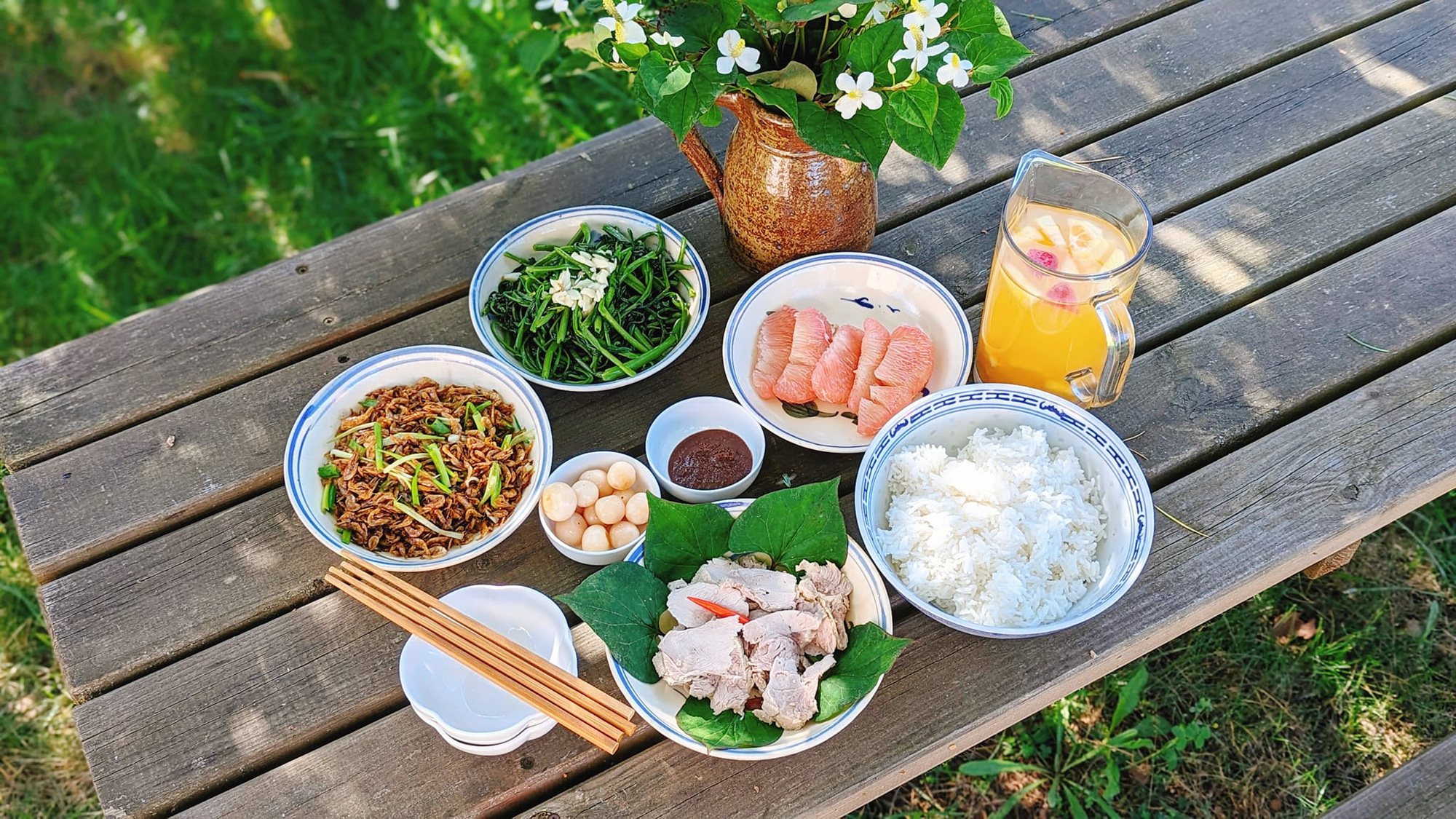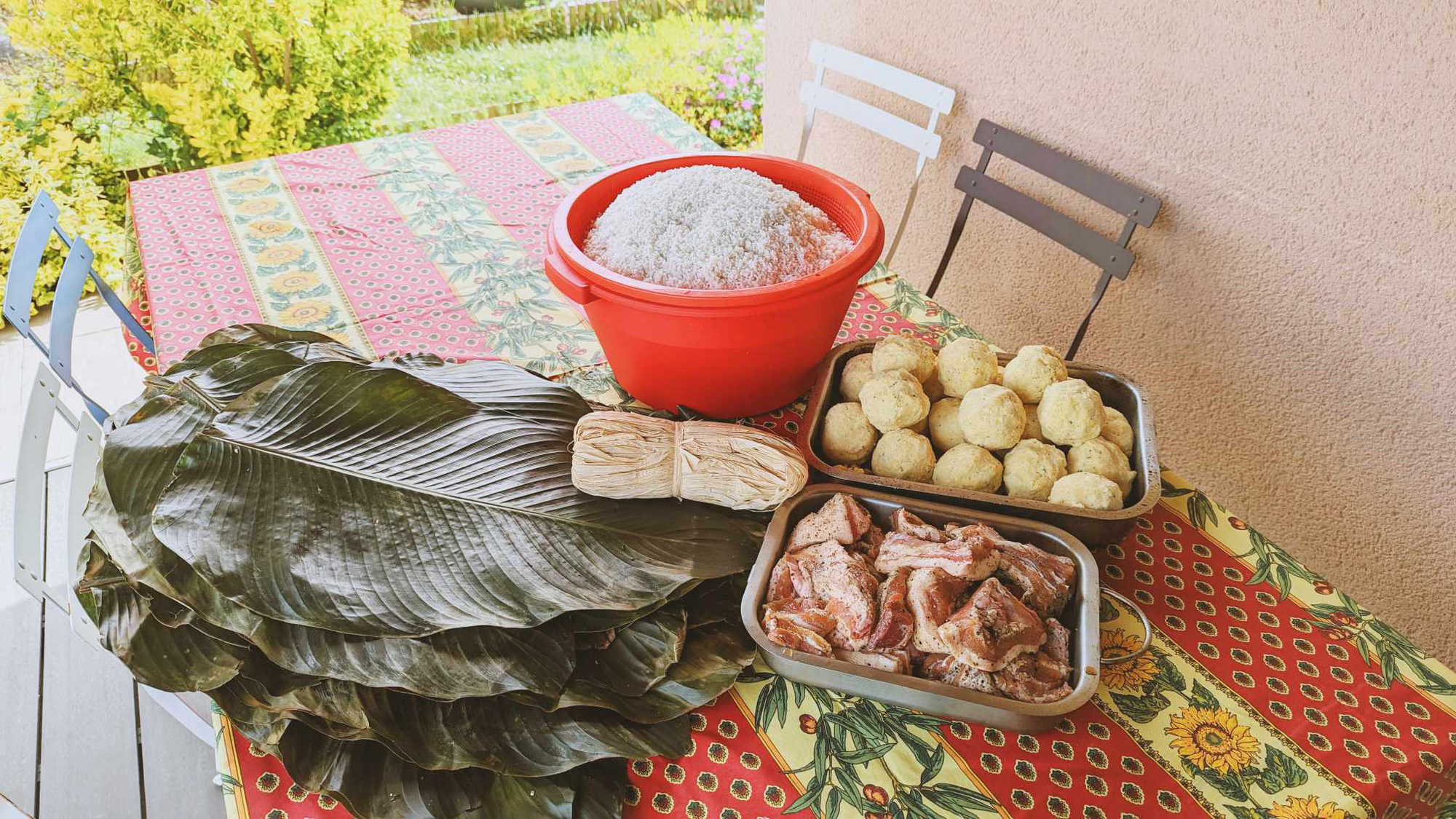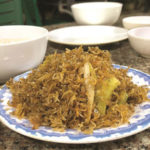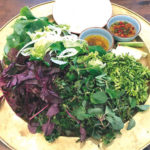Do Thuy Linh, a resident of Toulouse City, is a master of Vietnamese cuisine, regularly whipping up delicious and authentic meals for her family. From malabar spinach and dried shrimp soup to chicken stir-fried with lemongrass and chili, Linh’s culinary skills are a testament to her Vietnamese heritage.
Linh’s meals are a bargain, with each dish costing less than 10 euros and feeding a family of two to three. This is a far cry from her life in Vietnam, where she cherished the daily ritual of cooking and caring for meals. Now, in France, she continues to prepare Vietnamese dishes, evoking the flavors of her homeland.
|
|
| A mouthwatering spread prepared by Linh, featuring bamboo shoots and bone soup, fried eggs with basil, chayote vines stir-fry, and chicken with lemongrass and chili. Photo: Supplied |
While Vietnamese cuisine may not be an everyday occurrence in her household due to her husband’s preference for Western dishes, Linh’s family still enjoys these flavorful meals three to four times a week. For Linh, it’s not about fancy or extravagant dishes; simple rice, soup, and vegetables are all she needs to satisfy her cravings.
However, sourcing Vietnamese ingredients in France is no easy feat. Unlike the abundance of fresh produce available in roadside markets back home, Linh finds herself facing a challenge. French supermarkets often lack the spices and herbs essential to Vietnamese cooking, so she has taken to stockpiling these items at home.
“It’s rare to find Vietnamese vegetables in Western markets, and the Asian markets are quite far,” Linh explains, recalling a time when she craved sour fish soup but couldn’t get her hands on limnophila aromatica, a key ingredient. “The nearest place to buy it is 30-40 minutes away.”
|
|
| Linh’s creativity shines in this meal, featuring fried eggs with mugwort, pork belly with galangal, fermented rice, and clausena indica leaves. Photo: Supplied |
To overcome this obstacle, Linh started cultivating basic herbs at home, washing, freezing, and storing them meticulously in her refrigerator for weekly use. She also adapts her recipes to suit the ingredients available in France. For instance, she once substituted unsweetened yogurt for fermented rice in a dish called “thịt lợn giả cầy” (civet imitation pork).
Linh’s resourcefulness knows no bounds. When she craved “bánh khúc” (Vietnamese cudweed sticky rice balls), but cudweed was nowhere to be found, she quickly substituted kale, resulting in a dish that was equally delicious. This adaptability is a testament to her culinary skills and creativity.
|
|
| A delicious spread by Linh, featuring stir-fried water spinach, roasted dried shrimp, boiled meat with shrimp sauce, and salted eggplant. Photo: Supplied |
Linh is also savvy when it comes to saving money on groceries. She explains, “In France, chicken breasts are preferred over chicken thighs, making the former more expensive. Personally, I prefer chicken thighs, so I save money there. I also opt for older chickens when making ‘phở’ [Vietnamese noodle soup] or braised dishes—they’re cheaper and offer a chewy, flavorful experience.”
She adds, “I keep an eye out for supermarket promotions and stock up on discounted items whenever I can.”
|
|
| The talented chef, Do Thuy Linh, poses for a photo in France. Photo: Supplied |
French Palates Delight in Vietnamese Cuisine
According to Linh, French people have a keen interest in Vietnamese cuisine, especially “nem rán” (spring rolls) and “bún thịt nướng” (noodles with grilled pork). She often invites French friends and relatives to her home to savor these delicious dishes.
During her father-in-law’s birthday celebration, some French guests who had traveled a long distance joked that their visit was as much about the delicious Vietnamese food as it was about the occasion itself. Linh’s husband also teases her about her exceptional cooking skills, remarking on his good fortune to have such a talented wife.
Linh has lived in France for five years, and during this time, she has embraced and maintained the tradition of making “bánh chưng” (square sticky rice cakes filled with mung beans and pork) every “Tết” (Vietnamese Lunar New Year). This tradition brings her great happiness and a sense of connection to her homeland.
|
|
| Linh prepares the ingredients for ‘bánh chưng’, a traditional Vietnamese dish. Photo: Supplied |
Her “Tết” spread is a feast for the senses, including “xôi gấc” (sticky rice with gac fruit), “nem rán,” bamboo shoot soup, kohlrabi salad, and Vietnamese steamed pork sausage. It mirrors the traditional “Tết” dishes enjoyed by many in northern Vietnam.
“Through these Vietnamese meals, I aim to engage and connect with my local community,” Linh says. “Wherever you go, Vietnamese cuisine holds a special place in the hearts of Vietnamese people. For me, meals at home are particularly meaningful as they express the cook’s love through each dish shared with family members.”
Vietnam boasts street food in Moscow
NDO –The Vietnamese Street Food Festival, the eight of its kind, opened at the Hanoi-Moscow Trade Centre complex (Incentra) in Moscow, Russia, on March 8, with the aim of promoting the Vietnamese culinary culture to Russian people and international friends.

